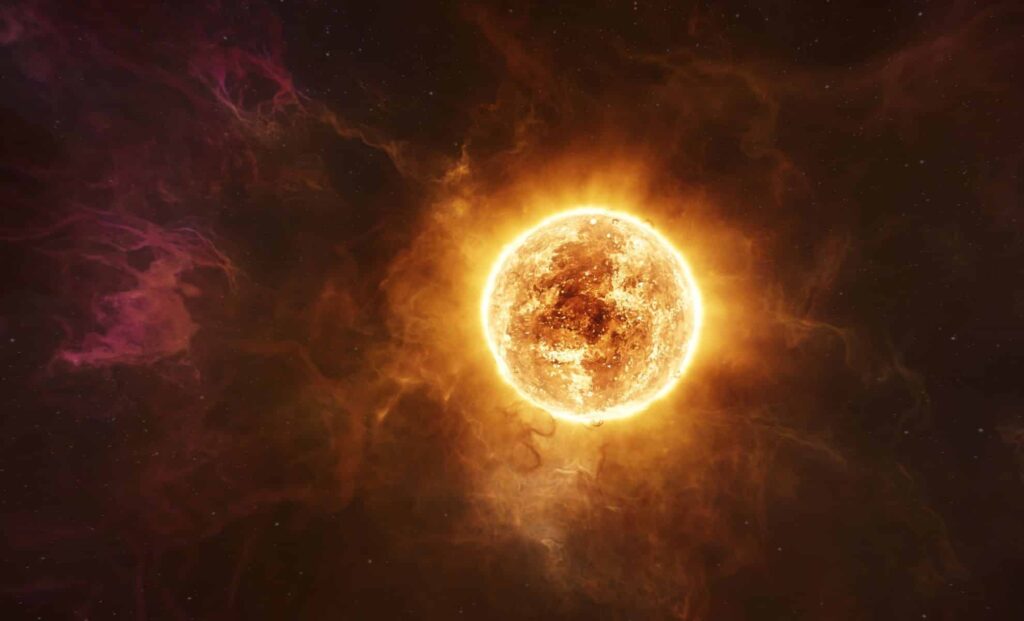
CAMBRIDGE, MA – New research reveals the dramatic impact of stellar flares on planetary atmospheres, reshaping them in mere days.
Stars, often perceived as stable celestial bodies, can unleash powerful stellar flares that radically alter the atmospheres of nearby planets. This phenomenon, according to recent studies, can occur over just a few days, with implications for both exoplanets and Earth.
The Power of Stellar Flares
Stellar flares are intense explosions resulting from the sudden release of magnetic energy in a star’s atmosphere. These flares emit high-energy radiation, including ultraviolet light and X-rays, which can affect planets across vast distances. Particularly active are red dwarfs, smaller and cooler stars than our Sun, which frequently experience these energetic bursts.
Red dwarfs possess stronger magnetic fields, triggering flares that can strip away atmospheres from nearby exoplanets or inundate them with harmful radiation. Unlike our Sun’s solar flares, these stellar flares are more frequent and intense, posing significant challenges to planetary atmospheres.
Solar Flares and Their Impact on Exoplanets
Research models simulate conditions on TRAPPIST-1e, a tidally locked exoplanet orbiting a red dwarf. The study used a three-dimensional general circulation model to track atmospheric changes during stellar flares. When a flare occurs, shifts in temperature, chemistry, and wind are observed minute by minute.
After a flare, the thermosphere cools by up to 180 °F, while the mesosphere warms by 50 °F due to trapped infrared light.
Winds on the planet’s night side can exceed 90 mph, contrasting sharply with pre-flare conditions. This chain reaction begins when incoming protons collide with molecular nitrogen, leading to ozone depletion and increased ultraviolet light penetration.
A Ripple Effect Across Planets
Stellar flares initiate a cascade of atmospheric changes, starting high above a planet’s surface. The depletion of ozone allows more ultraviolet light to reach deeper atmospheric layers, altering heating rates and pressure patterns. In extreme cases, up to 80 percent of stratospheric ozone can be stripped in eight simulated years, exposing planets to harmful radiation.
On Earth, the effects are less severe due to our magnetic field and thick ozone layer. However, solar flares still leave traces, as seen during the Halloween solar proton event of 2003, which caused the polar mesosphere to warm by 18 °F.
Habitability Under Threat
The frequency and intensity of stellar flares directly impact exoplanet habitability. Even planets in the “habitable zone” could become inhospitable if exposed to frequent flares, potentially entering a “moist greenhouse” state.
This state accelerates hydrogen loss, drying out the planet and ending its prospects for supporting life within a few hundred million years.
Despite these challenges, stellar flares might aid prebiotic chemistry on young planets by fixing atmospheric nitrogen into nitrates, potentially playing a role in life’s emergence.
What Comes Next
The findings underscore the delicate balance of planetary climates and the significant role stellar activity plays in shaping them. Future research will continue to explore how these flares influence planetary atmospheres and their implications for habitability.
As scientists delve deeper into these cosmic phenomena, the understanding of stellar flares’ impact on planets, both near and far, will undoubtedly expand, offering insights into the complexities of our universe.






